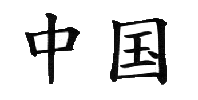China Beat Archive

China Beat Blog: Archive 2008-2012
Date of this Version
5-25-2008
Document Type
Article
Citation
May 25, 2008 in The China Beat http://www.thechinabeat.org/
Abstract
A land of floods, fault lines and food crises, China has rarely been one of mercy in the Western imagination. Today, with millions of Chinese dealing with another world-class disaster on their soil, the Western press appears to be singing a different tune. For one, Tuesday’s New York Times heralded that “Many Hands, Not Held by China, Aid in Quake,” reporting that even official Chinese media sees private donations exceeding the state’s total so far of half a billion relief dollars. This “striking and unscripted public response” of “blood drives, cake sales, charity fund-raisers and art auctions” might even pose a threat, the paper ventures, to an authoritarian state whose monopoly on civil activity has been its mainstay. The question of political aftershocks from the recent tremor should be left to political scientists. More suitable for a historian is determining from where all this organized goodwill is stemming, unfortunately an area in which Western scholarship to date has been feeble at best.
Party sympathizers might lay claim to a social consciousness instilled by the 1949 revolution; others might say the seeds of civic activism were sown by Treaty Port-based New Culture modernizers of the 1920s; still others would credit the patriotic origins of the Chinese Red Cross or lay charity at the feet of nineteenth century missionary relief efforts. The tendency is to stress a singular introduction to China of certain ideals—Socialist, Western, Modern, Nationalist, Judeo-Christian—that are far more likely an amalgamation of disparate factors reaching as far back as China’s Classical past. Disentangling this Gordian knot is no easy task, requiring the study of a matrix of motives, voiced and unvoiced, cultural repertoires and historical contingencies.
Included in
Asian History Commons, Asian Studies Commons, Chinese Studies Commons, International Relations Commons


Comments
Copyright May 25, 2008 Pierre Fuller. Used by permission.